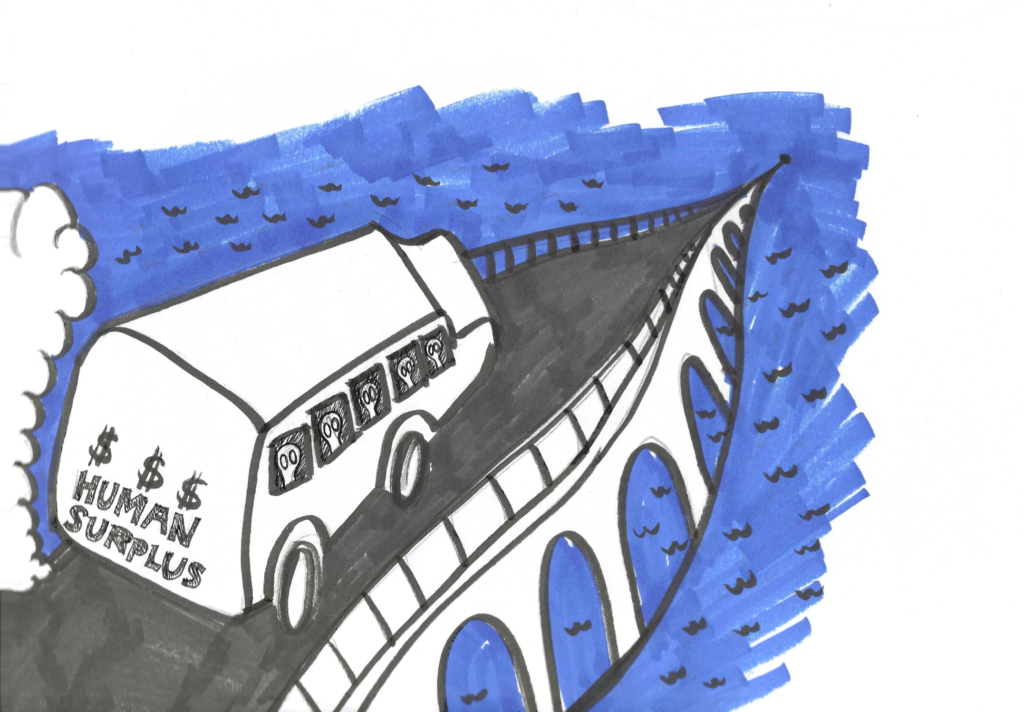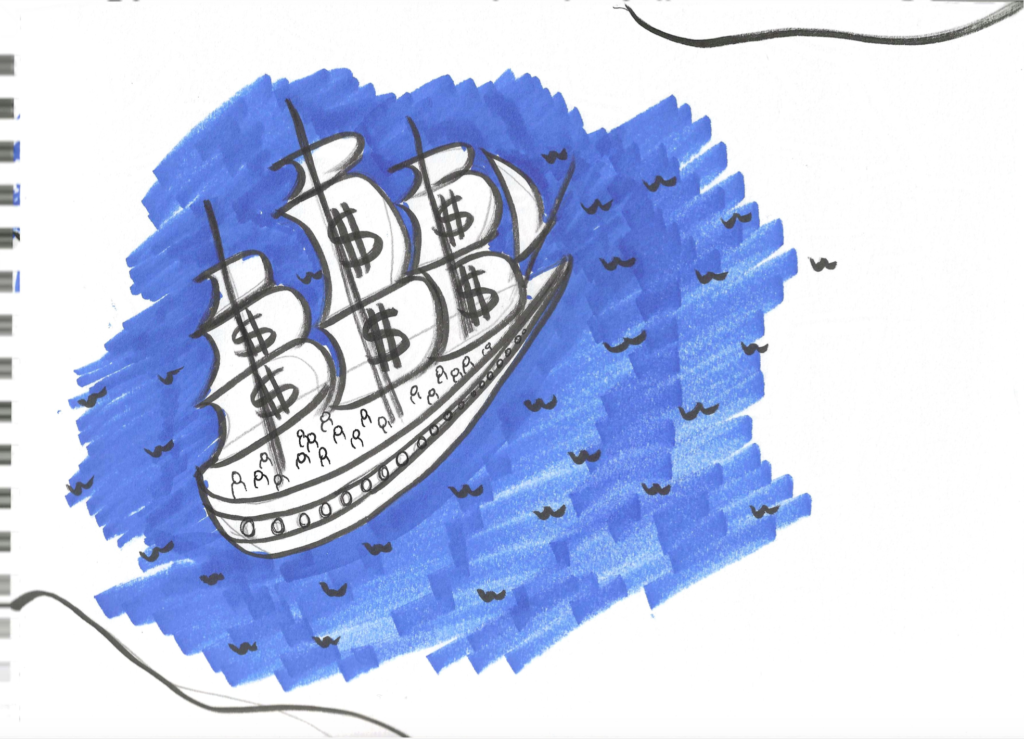
In response to Angela Davis’s book Are Prisons Obsolete?, I created three drawings which attempt to capture some of the thoughts the text stirred up for me. One of my main takeaways is Davis’s point that prisoners are not just imprisoned for the simple fact that they did something wrong and need to be punished—rather on a large scale, prisoners serve as a cheap and convenient labor pool to generate profit for myriad corporations and interests. I think this is something that many people don’t realize and don’t take into consideration when evaluating whether prisons are morally justified.
This topic had already entered my mind a few years ago when Democracy Now covered the story of the many prisoners who fought giant wildfires in California while making much less money than the other firefighters in extremely dangerous conditions. Furthermore, these prisoners were not even allowed to count the experience as training for firefighting jobs after getting out of jail, which seems not only wrong, but illogical. Davis’s book showed me that the use of prison labor is much more widespread than I knew. I would like to learn more about this, and what laws govern the rights of prison laborers.

Related to the exploitation of prison labor is Davis’s point that US prisons are a direct extension of slavery. I was struck by learning about how closely prisons were tied to “managing” and suppressing the freedom of formerly enslaved people. It all comes together when I think about the fact that Africans were brought to the US in the first place as a cheap labor force to generate profit for white landowners. While I was reading Davis’s book, I heard a story on NPR about Rikers Island Prison, which has been in the news a lot lately because of its brutal conditions. The story featured women who rode the city bus to the prison to visit loved ones. One woman’s words stuck with me: she lamented about all the souls that travel across the water and never come back. The resonance with the historical journey of enslaved people across the ocean was poignant to me.
Davis describes prisons as “black hole[s]” that absorb the “detritus of contemporary capitalism” (p.16). The absorption of lives by this black hole and the one-way journey across the water are the images that informed my first drawing, which shows people traveling across a bridge into a black hole in a bus labeled “human surplus.” The second drawing is a similar perspective, but shows people being carried across water by boat, as they were in the transatlantic slave trade. The sails are marked with dollar signs because, like the prisoners, the goal was to turn human beings into profit. The third drawing represents what happens to people inside the prison, and was inspired by Charles Dickens’ comment about prisons enacting a “slow and daily tampering with the mysteries of the brain” (p. 48).
I’m glad to have learned from Davis’s compelling arguments for the abolition of prisons. I feel more informed and have a stronger stance on the issue now. I love Herman Bianchi’s notion that she introduces near the end of thinking of the law-breaker as a debtor who has the responsibility to repair whatever harm they caused (113-114). In contrast to the stripping away of humanity that seems to happen in the prison, this idea instills people with agency, and I believe would create a better and more just outcome for everyone.
